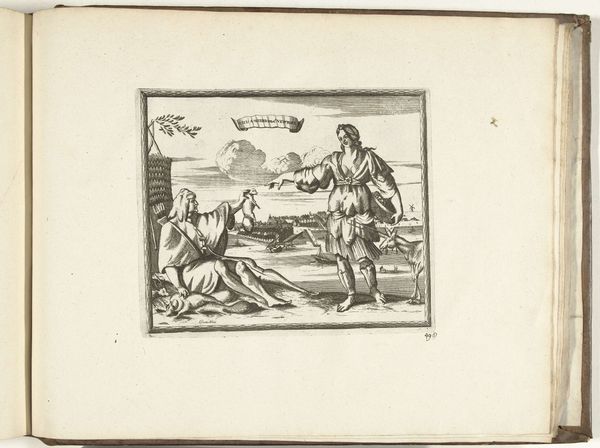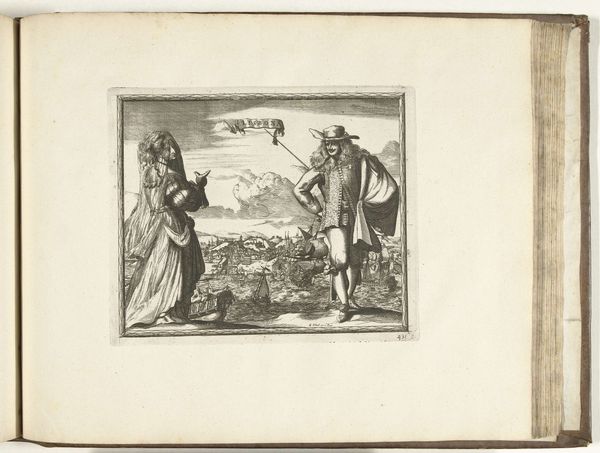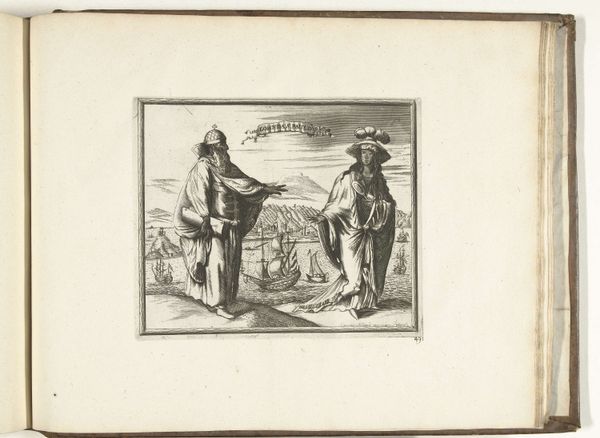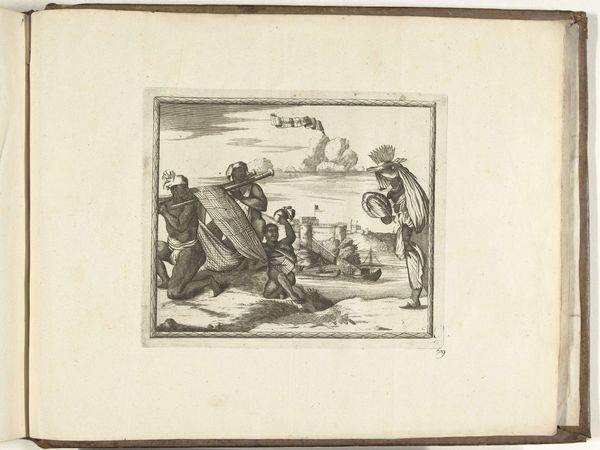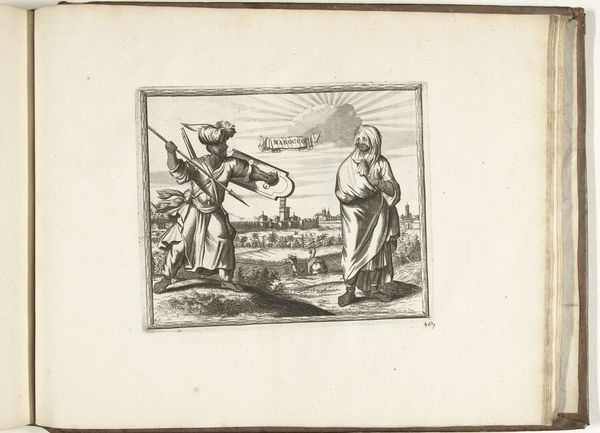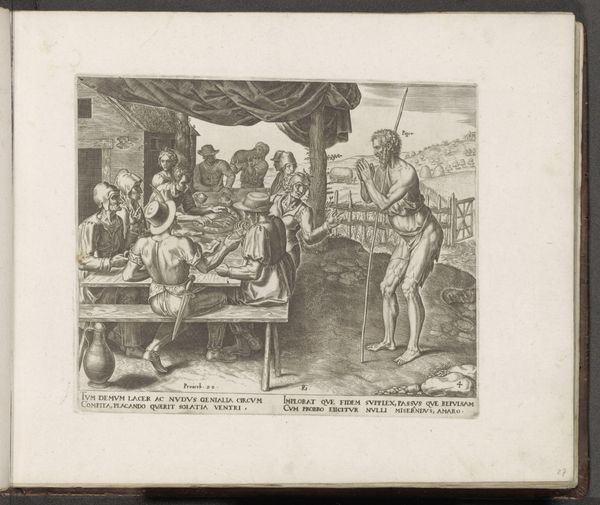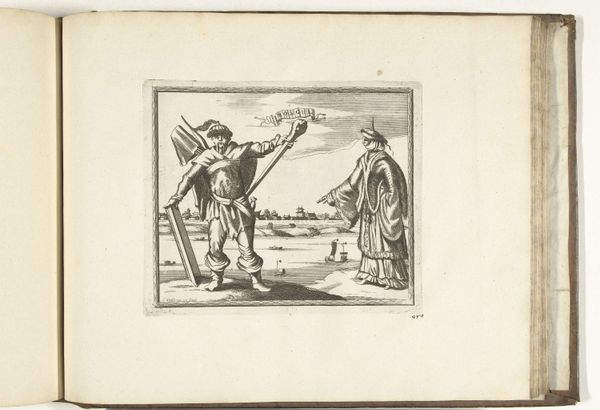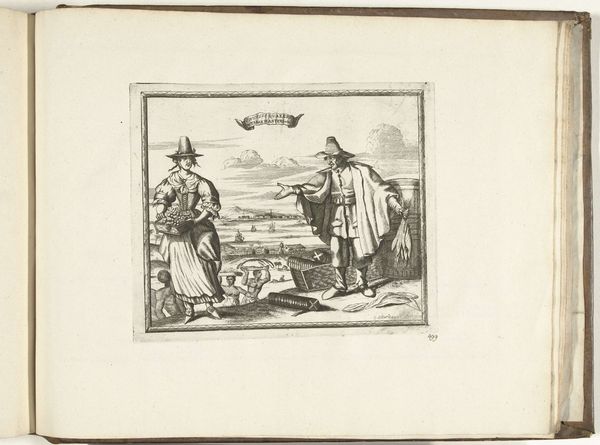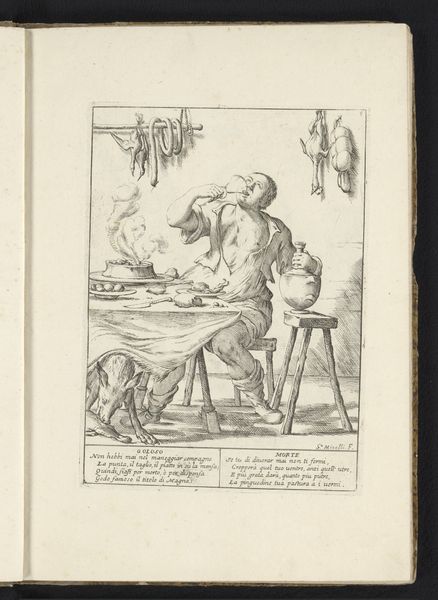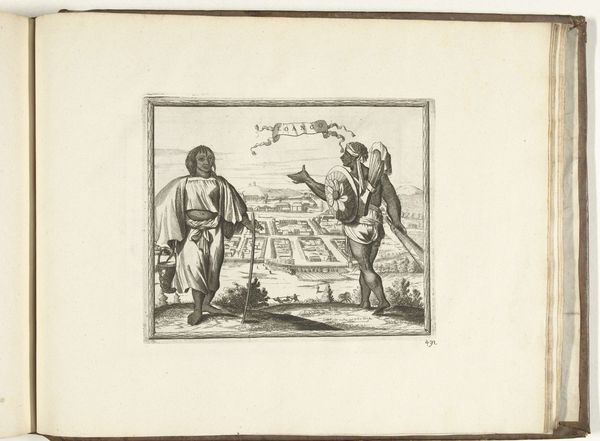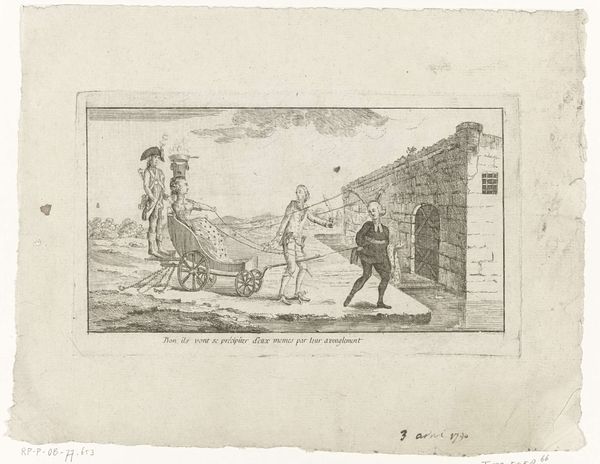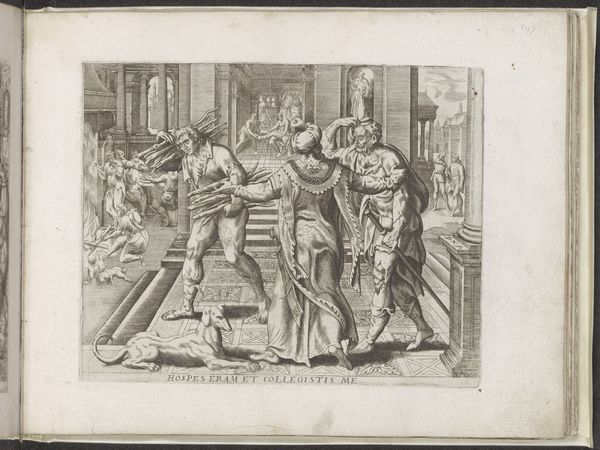
drawing, print, paper, engraving
#
drawing
#
baroque
# print
#
pen sketch
#
old engraving style
#
figuration
#
paper
#
orientalism
#
islamic-art
#
genre-painting
#
history-painting
#
engraving
Dimensions: height 174 mm, width 209 mm
Copyright: Rijks Museum: Open Domain
Curator: This is a striking engraving by Carel Allard from 1726, titled "Kostuum van de Straat Davis en Hudson Baai," housed here at the Rijksmuseum. The scene depicts figures in what appear to be traditional costumes in the Davis Strait and Hudson Bay area. Editor: My first thought? Brrr! It looks so desolate and cold. The stark lines and limited detail almost amplify that sense of isolation. It feels like a glimpse into a harsh, unfamiliar world. Curator: Indeed. The artist's use of line evokes that environment, yet it's important to consider the context. What do you notice about how the figures are presented? To me, they're not just inhabitants, they're almost specimens. Editor: I see what you mean. There's a bit of detachment, like observing something 'other'. That man with the fish almost seems proud, but also...placed there for our analysis? It brings up that whole historical lens of colonial observation, right? Like a Baroque anthropological study. Curator: Exactly! The engraving participates in the "exoticizing" of these cultures, prevalent during the period of exploration and colonial expansion. Notice how the woman's clothing and posture are detailed; it conveys specific information about social standing and practical adaptations, like protecting herself against the weather. This sort of 'documentation' served a purpose back then. Editor: It is also an alien view, of course! It makes you wonder what the subjects of the piece, these individuals in Davis Strait and Hudson Bay, might have thought, might have felt as they encountered this outside gaze. Were they ever shown this image, do you think? Curator: That’s a poignant question. I imagine such encounters would have been far more complex. Back in Europe, such imagery fed a thirst for the exotic, for "other" cultures to explore and document through art. This shaped perceptions and, in a way, paved the road for colonial projects. Editor: A road paved with lines, shading, and well-intentioned (but, let's face it, totally skewed) observations. I see a bit of melancholy there in realizing how distorted an image can become as it crosses cultures and time. The chill I feel is more than just weather; it’s also a cultural gap, echoing between centuries. Curator: Well said. I believe understanding the layered narratives embedded within these images, both intentional and unintentional, lets us grapple more honestly with history and its ongoing effects. Editor: Cheers to that! It’s amazing how much can be said with lines and paper!
Comments
No comments
Be the first to comment and join the conversation on the ultimate creative platform.
